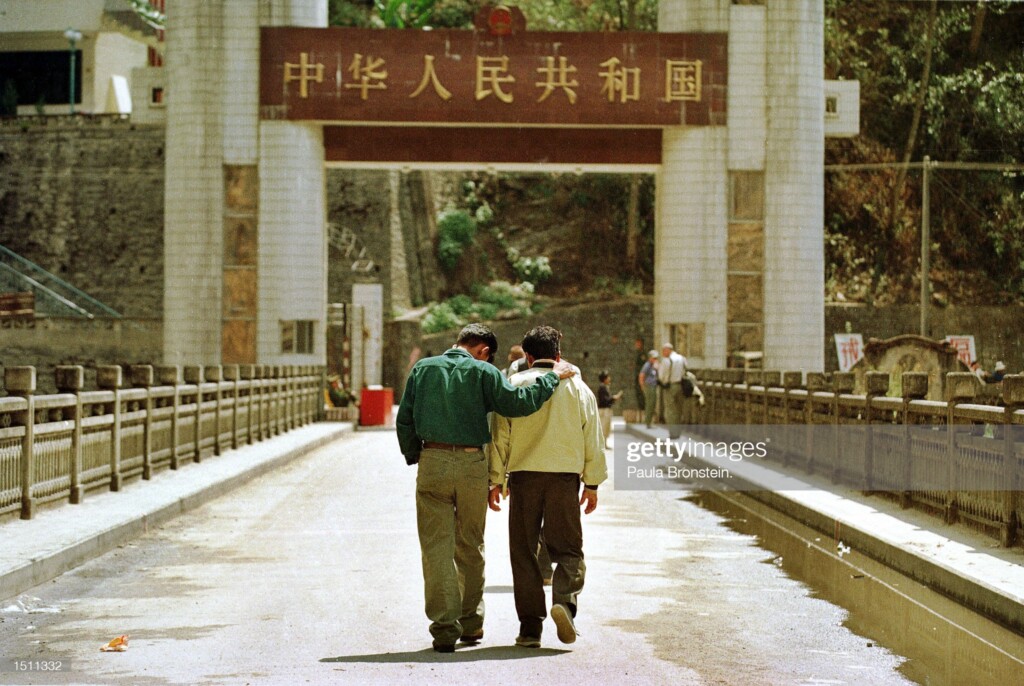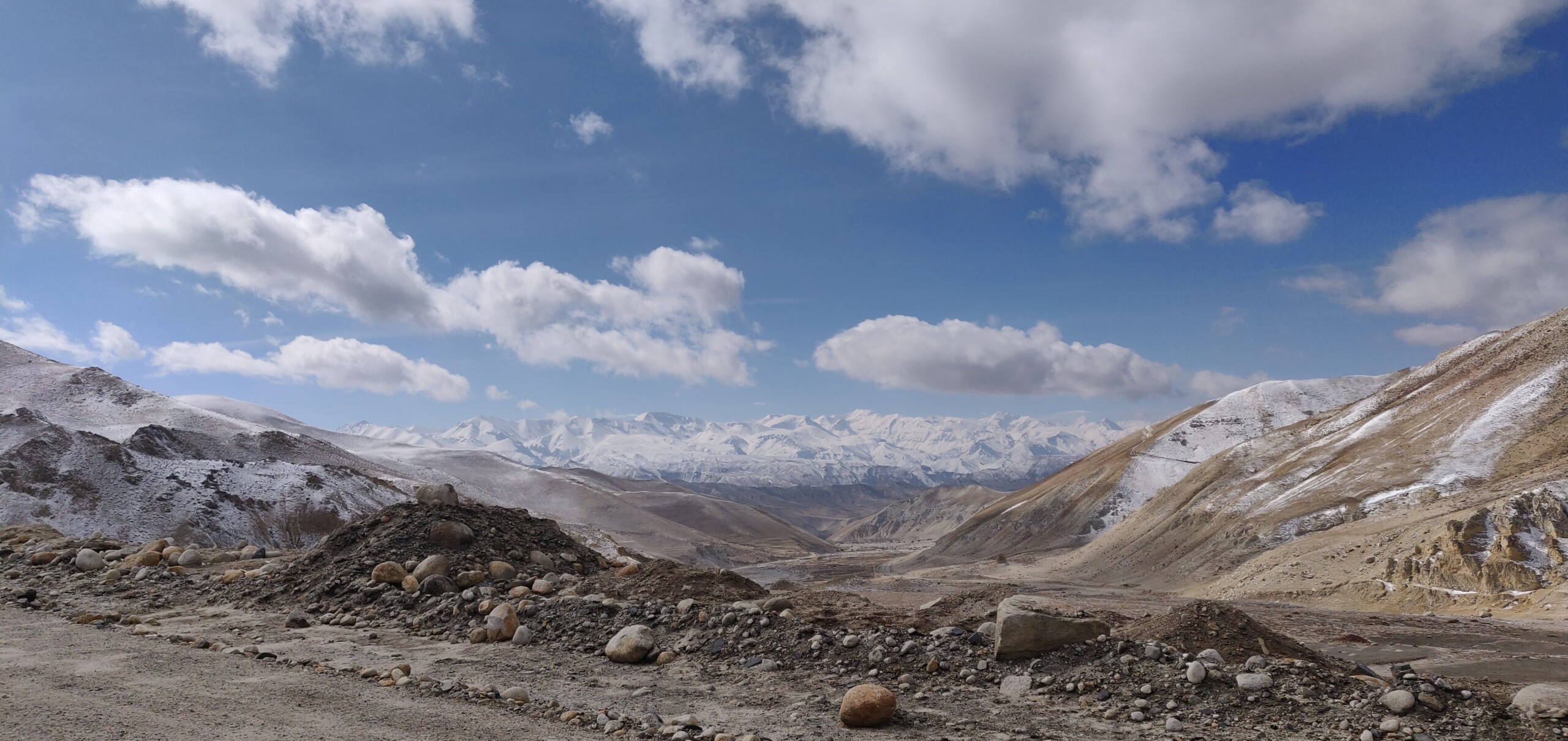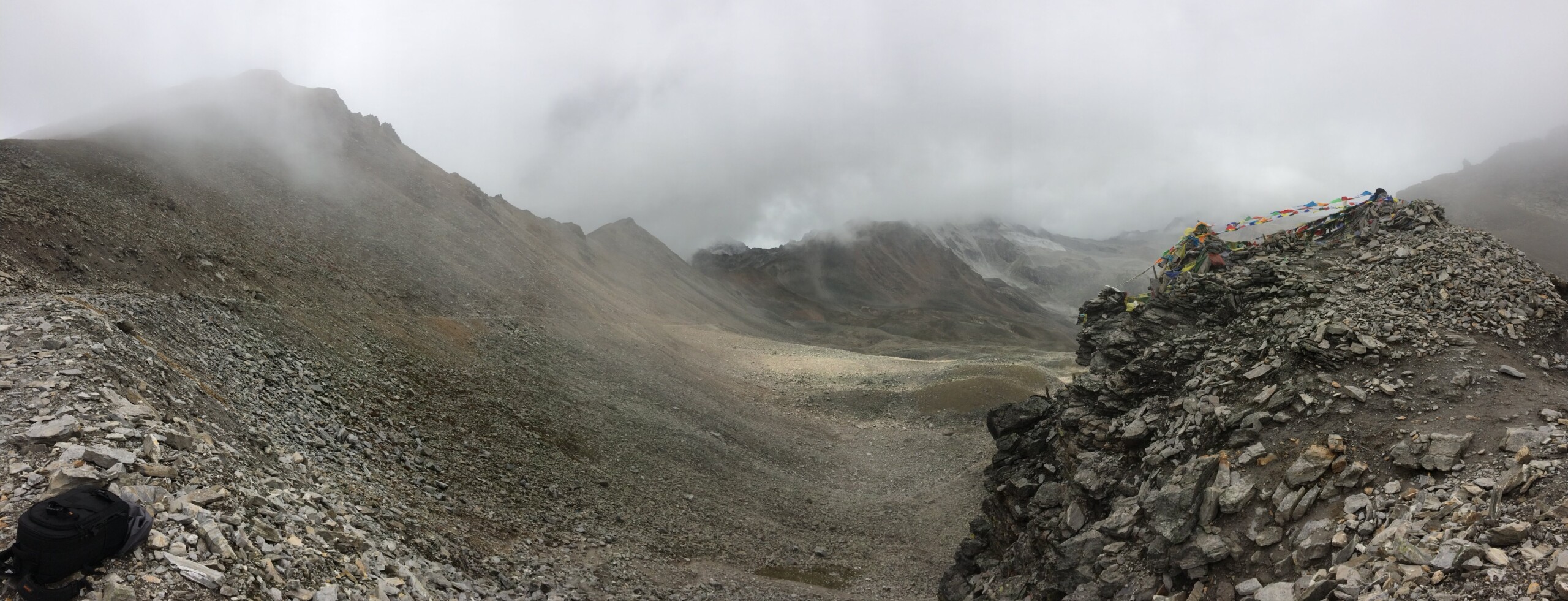For any author, the cover is perhaps the most important element after the text itself. And so, it was for us. The challenge was to convey to the reader what All Roads Lead North: Nepal’s Turn to China was all about, and that too with a single image. After all, the book travels in time from the 18th century to the 21st; it shifts from the Newar traders’ mansions in Lhasa and the trans-Himalayan valley of Limi to Rasuwa, where a series of Chinese investments are changing the geography, and the lanes of Thamel, where the influx of Chinese tourists means a little ‘Chinatown’ is in the making; and finally, the book also talks about Nepal’s delicate position between India and China. There’s trade; there’s war; there’s peace; there’s geopolitics and the Cold War; and there’s the changing face of the Himalaya. There are stories about tiny seeds that look like a dried-out pea but have changed several lives; and about Tibetans who once waged a guerrilla war against China from Mustang’s cold heights.
So how was one to select one image that conveyed all of these ideas at once?
Both Ajitha, my editor, and I agreed we didn’t want an illustrated cover, or one that simply relies on type. What we needed was a perfect image, if it existed. So we went on a hunt, digging deep into the photo archives on the internet.
One option we had was to make the cover raise eyeballs. Should we make our cover controversial by directly telling the reader India was no longer Nepal’s primary bilateral partner, and in fact, China had replaced it in terms of influence within the country? After all, controversy sells. Further, Nepal’s proximity to China was highlighted during the 2020 Kalapani dispute, following which protests broke out in Nepal. What we had as choices then were images of anti-Indian protests in Nepal such as the following:

These images would provoke, without doubt. A certain section of the Nepali intelligentsia would also view the book in a different light as well. And such images would generate dialogue, for sure.
But did we really want that?
We thought relying on such an image would be underplaying what the book was really about: a history that emphasizes Nepal’s age-old connections with Tibet and China via trade and religion. It would do injustice to the book, and so, we moved on to other options.
***
One of the most fascinating pieces of art I came across during my writing were a set of Qing-era copperplate prints that were made after General Fuk’anggan’s Nepal campaign in 1791-92. The following one, for example, depicts the capture of Xiebulu, or Shyabru:

The copperplates were engraved with the Qianlong emperor’s poems commemorating the battle (and playing up the Qing troops’ courage and bravery). The one above reads:
Having crossed the bridge of Resuo River there we found our way;
No bandits were met abroad and we chased them until the end.
Then we saw Xiebulu filled with gangs;
And we overpowered them when we found the bypass road.
United we attacked them [and that is why] we won, for sure;
We competed with each other with courage and spirit.
To their praise, our troops were unanimous in their hostility to the enemy;
Every time [ We] read the urgent report,
We feel it is in accordance with Our dearest wishes.
The prints would have made for an intriguing cover, but would they tell the book’s story? I write about the 1792 war, but the book is not as much about war as much as it is about peacetime. Further, the prints are striking, but visually, they would not solve our purpose. The prints would have been great on a more academic tract; however, I was not writing one, and so, we shelved these too.
***
We were running out of ideas.
We didn’t want images that displayed our leaders, such as this:

They are far too boring, frankly, for a book that is as much about people-to-people relations as about politics. So we immediately said no to this option.
Another visually striking option was to show how China’s infrastructure gains in the Himalaya are imbuing Nepalis with new aspirations and ambitions:
These two images made the shortlist, for they tell how China has captured the imagination of those who live across the border with its development. Both have been clicked at Kora La, the border pass above Lo Manthang in Mustang, and the vehicles are making their way to the now-annual trade fair that takes place in Likse, across the border, every summer:

As stunning as both images are, by themselves they do not tell the whole story. It would require a detailed caption for a reader to understand why a truck or a tractor is on the cover. And we certainly didn’t want that.
Finally, I came across this picture of two Nepali men walking across the Tatopani border in 2000 (those who’ve been to the border recently will notice the changes):

This picture seemed to say it all: there is a certain quality to the men’s gait that exudes comfort; the arm over the friend’s shoulder seems to suggest a degree of warmth between the two; and as a friend said, is a perfect representation of the Nepal-China interaction at the human level. After all, the road is taking them north!
Finally, we had our cover:

Order All Roads Lead North: Nepal’s Turn to China on Amazon here. Available across bookstores in India. In Nepali bookstores by end of March.
Cover designed by Gavin Morris.
All photos except the Qing print via Getty Images.


